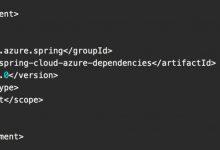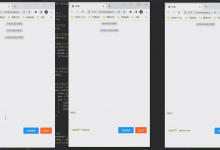

Spring Data,是为数据访问提供熟悉且一致的基于Spring的编程模型,同时仍然保留底层数据存储的特殊特性。
它是对于数据访问技术,关系数据库和非关系数据库,map-reduce框架和基于云的数据服务变得容易。Spring Data是一个总括项目,其中包含很多特定于数据库相关的子项目。

首先,先带大家看一下本篇文章的大致介绍。
没目录怎么知道这篇到底有多少干货呢?
Spring Data是什么
Spring Data能干什么
Spring Data的第一个HelloWorld程序
通过名字来确定方法
通过注解的形式来实现查询
写本地的SQL查询
增删改的玩法
使用框架中提供的增删改查的方法
分页和排序
JpaRepository的使用
是不是很清晰呢,现在开始进入正文,一个一个来:
Spring Data是什么
我们传统的开发中,我们的整个DAO层的代码上都是相对来说,都是比较复杂的,在这种情况下,Spring团队就考虑到一个问题,能不能开发一个框架,这个框架能够最大限度的减少DAO层的开发呢?
Spring Data就是为了简化DAO层操作的一个框架
传统的增删改查在我们的Spring Data中已经实现了,也就是说大部分的DAO层操作部分不用写了,仅仅只是需要编写复杂的业务的调用就可以啦

写的这部分的代码,是需要写接口的声明就可以啦,不用写实现,这个实现是自动实现的
Spring Data能干什么
主要用途:
传统的增删改查
排序
分页
排序后分页
即使你需要写DAO,也只是写声明就可以啦,不用写实现
Spring Data的第一个HelloWorld程序(JPA、Hibernate、Spring、SpringMVC、Spring Data)
导包

编写配置文件
<?xml version=\"1.0\" encoding=\"UTF-8\"?><beans xmlns=\"http://www.springframework.org/schema/beans\" xmlns:xsi=\"http://www.w3.org/2001/XMLSchema-instance\" xmlns:p=\"http://www.springframework.org/schema/p\" xmlns:context=\"http://www.springframework.org/schema/context\" xmlns:tx=\"http://www.springframework.org/schema/tx\" xmlns:aop=\"http://www.springframework.org/schema/aop\" xmlns:jpa=\"http://www.springframework.org/schema/data/jpa\" xsi:schemaLocation=\" http://www.springframework.org/schema/beans http://www.springframework.org/schema/beans/spring-beans.xsd http://www.springframework.org/schema/context http://www.springframework.org/schema/context/spring-context.xsd http://www.springframework.org/schema/tx http://www.springframework.org/schema/tx/spring-tx.xsd http://www.springframework.org/schema/aop http://www.springframework.org/schema/aop/spring-aop.xsd http://www.springframework.org/schema/data/jpa http://www.springframework.org/schema/data/jpa/spring-jpa-1.2.xsd\"> <!--引入Properties文件--> <context:property-placeholder location=\"classpath:config/db.properties\"/> <!--配置c3p0的连接池--> <bean id=\"dataSource\" class=\"com.mchange.v2.c3p0.ComboPooledDataSource\"> <property name=\"driverClass\" value=\"${driverClass}\"></property> <property name=\"jdbcUrl\" value=\"${url}\"></property> <property name=\"user\" value=\"${user}\"></property> <property name=\"password\" value=\"${password}\"></property> <property name=\"acquireIncrement\" value=\"${acquireIncrement}\"></property> <property name=\"maxPoolSize\" value=\"${maxPoolSize}\"></property> <property name=\"minPoolSize\" value=\"${minPoolSize}\"></property> <property name=\"maxStatements\" value=\"${maxStatements}\"></property> </bean> <!--配置JPA实现产品的适配器--> <bean id=\"jpaVendorAdapter\" class=\"org.springframework.orm.jpa.vendor.HibernateJpaVendorAdapter\"> </bean> <!--配置EntityManager对象--> <bean id=\"entityManagerFactory\" class=\"org.springframework.orm.jpa.LocalContainerEntityManagerFactoryBean\"> <!--注入数据源--> <property name=\"dataSource\" ref=\"dataSource\"></property> <!--扫描entity包的--> <property name=\"packagesToScan\" value=\"com.qy.helloworld\"></property> <!--注入JPA实现产品的适配器--> <property name=\"jpaVendorAdapter\" ref=\"jpaVendorAdapter\"></property> <!--配置的是Hibernate的其他配置 除了连接数据库4大要素之外的其余配置--> <property name=\"jpaProperties\"> <props> <!--是否自动创建表 --> <prop key=\"hibernate.hbm2ddl.auto\">update</prop> <!--配置是否展示SQL--> <prop key=\"hibernate.show_sql\">true</prop> <!--是否格式化SQL--> <prop key=\"hibernate.format_sql\">true</prop> <!--连接数据库的方言--> <prop key=\"hibernate.dialect\">org.hibernate.dialect.MySQL5Dialect</prop> </props> </property> </bean> <!--配置事务环境--> <bean id=\"jpaTransactionManager\" class=\"org.springframework.orm.jpa.JpaTransactionManager\"> <!--注入dataSource--> <property name=\"dataSource\" ref=\"dataSource\"></property> <!--注入entityManagerFactory对象--> <property name=\"entityManagerFactory\" ref=\"entityManagerFactory\"></property> </bean> <!--使用事务--> <tx:annotation-driven transaction-manager=\"jpaTransactionManager\"/> <!--配置AOP的自动代理--> <aop:aspectj-autoproxy></aop:aspectj-autoproxy> <!--配置Spring的包扫描--> <context:component-scan base-package=\"com.qy.helloworld\"></context:component-scan> <!--Spring data的包的扫描 这里的扫描扫描的是DAO层所在的位置--> <jpa:repositories base-package=\"com.qy.helloworld\" entity-manager-factory-ref=\"entityManagerFactory\" transaction-manager-ref=\"jpaTransactionManager\"></jpa:repositories></beans>
编写实体类和映射
@Entity@Table(name=\"t_user\")public class User { @Id @GeneratedValue(strategy=GenerationType.IDENTITY) private int userId; private String userName; private String password;}
编写Repository类
public interface UserRepository extends Repository<User,Integer>{ /** * 这个的意思是通过id找用户 * @Title: getByUserId * @Description: TODO * @param: @param userId * @param: @return * @return: User * @throws */ public User getByUserId(int userId);}
测试
ClassPathXmlApplicationContext applicationContext=new ClassPathXmlApplicationContext(\"config/bean-base.xml\"); //获取DAO的对象 UserRepository userRepository=applicationContext.getBean(UserRepository.class); User users=userRepository.findByUserId(1);}
通过名字来确定方法
代码演示:
举例如下
:
public interface UserRepository extends Repository<User,Integer>{ /** * 这个的意思是通过id找用户 * @Title: getByUserId * @Description: TODO * @param: @param userId * @param: @return * @return: User * @throws */ public User getByUserId(int userId); /** * 记住查询的开头只能是 get 或者 find 开头 By:通过什么查询 * @Title: findByUserId * @Description: TODO * @param: @param userId * @param: @return * @return: User * @throws */ public User findByUserId(int userId); /** * 通过用户名的模糊查询 * @Title: findByUserNameLike * @Description: TODO * @param: @param userName * @param: @return * @return: List<User> * @throws */ public List<User> findByUserNameLike(String userName); /** * 通过用户名和密码的Like来进行查询 * @Title: findByUserNameLikeAndPasswordLike * @Description: TODO * @param: @param userName * @param: @return * @return: List<User> * @throws */ public List<User> findByUserNameLikeAndPasswordLike(String userName,String password); /** * 用户名和密码like 然后id小于一个范围 * @Title: findByUserNameLikeAndPasswordLikeAndUserIdLessThan * @Description: TODO * @param: @param userName * @param: @param password * @param: @param userId * @param: @return * @return: List<User> * @throws */ public List<User> findByUserNameLikeAndPasswordLikeAndUserIdLessThan(String userName,String password,int userId);}
注意:一般情况下不会通过名字直接来写相应的方法,因为如果条件过多那么这个时候我们就存在名字特别长的问题
通过注解的模式来实现查询
代码演示:
举例如下
:
/** * 查询所有 没有条件直接查询 * @Title: findUserAll * @Description: TODO * @param: @return * @return: List<User> * @throws */ @Query(\"from User\") public List<User> findUserAll(); /** * 通过id来查找数据 参数直接拼接到后面 * @Title: findUserById * @Description: TODO * @param: @param userId * @param: @return * @return: List<User> * @throws */ @Query(\"from User u where u.userId<3\") public List<User> findUserById(); /** * 通过id查询存在占位符的情况 * @Title: findUserById1 * @Description: TODO * @param: @param userId * @param: @return * @return: List<User> * @throws */ @Query(\"from User u where u.userId<?\") public List<User> findUserById1(int userId); /** * 多条件的查询 可以指定当前的参数映射的这个位置 * @Title: getUserByNameAndId * @Description: TODO * @param: @param userName * @param: @param userId * @param: @return * @return: User * @throws */ @Query(\"from User u where u.userId=?2 and u.userName=?1\") public User getUserByNameAndId(String userName,int userId); /** * 模糊查询的时候动态拼接上 %的问题 * @Title: findUserByLike1 * @Description: TODO * @param: @param userName * @param: @return * @return: List<User> * @throws */ @Query(\"from User u where u.userName like concat (\'%\',?,\'%\')\") public List<User> findUserByLike1(String userName);
写本地的SQL 查询
代码演示:
举例如下
:
/** * 通过 * @Title: findUserAll11 * @Description: TODO * @param: @return * @return: List<User> * @throws */ @Query(nativeQuery=true,value=\"select * from t_user\") public List<User> findUserAll11();
增删改的玩法
代码演示:
添加业务逻辑 增加事务环境
:
@Service@Transactional //提供一个事务的环境public class UserService { @Autowired private UserRepository userRepository=null; /** * 数据的更新 * @Title: update * @Description: TODO * @param: @param userName * @param: @param password * @param: @param userId * @return: void * @throws */ public void update(String userName,String password,int userId){ userRepository.update(userName, password, userId); } public void delete(int userId){ userRepository.delete(userId); } public void insert(String userName,String password){ userRepository.insert(userName, password); }}
编写repository的对象
:
public interface UserRepository extends Repository<User,Integer>{ /** * 实现增删改的方法 * @Title: add * @Description: TODO * @param: @param userName * @param: @param password * @return: void * @throws */ @Modifying //这个注解的作用表示的是更新数据 @Query(\"update User u set u.userName=?,u.password=? where u.userId=?\") public void update(String userName,String password,int userId); /** * 更新数据 * @Title: delete * @Description: TODO * @param: @param userId * @return: void * @throws */ @Modifying //这个注解的作用表示的是更新数据 @Query(\"delete User u where u.userId=?\") public void delete(int userId); /** * 添加数据 * @Title: insert * @Description: TODO * @param: @param userName * @param: @param password * @return: void * @throws */ @Modifying //这个注解的作用表示的是更新数据 @Query(nativeQuery=true,value=\"insert into t_user(userName,password) values(?,?)\") public void insert(String userName,String password); }
测试
:
@Test public void testHelloWorld() throws Exception { ClassPathXmlApplicationContext applicationContext=new ClassPathXmlApplicationContext(\"config/bean-base.xml\"); //获取DAO的对象 UserService userService=applicationContext.getBean(UserService.class); userService.insert(\"小羽\",\"做程序的\"); }
使用框架中提供的增删改查的方法
代码演示:
提供的是Repository
:
public interface UserRepository extends CrudRepository<User,Integer>{}
分页和排序
代码演示:
提供的Repository
:
public interface UserRepository extends PagingAndSortingRepository<User,Integer>{}
测试
:
public class Test001 { @Test public void testPaging() throws Exception { ClassPathXmlApplicationContext applicationContext=new ClassPathXmlApplicationContext(\"config/bean-base.xml\"); //获取DAO的对象 UserRepository userRepository=applicationContext.getBean(UserRepository.class); /** * 第一个参数:当前的页的页数是多少 页数是从0开始的 第二页:2-1 * 第二个参数:表示的是每一页条目数 */ Page<User> pages=userRepository.findAll(new PageRequest(2-1,2)); System.out.println(\"查询到的数据:\"+pages.getContent()); System.out.println(\"数据的条目数:\"+pages.getSize()); System.out.println(\"页数:\"+pages.getNumber()); System.out.println(\"数据条目的总数:\"+pages.getTotalElements()); System.out.println(\"一共的页数:\"+pages.getTotalPages()); System.out.println(\"排序的规则:\"+pages.getSort()); } /** * 排序 * @Title: testSort * @Description: TODO * @param: @throws Exception * @return: void * @throws */ @Test public void testSort() throws Exception { ClassPathXmlApplicationContext applicationContext=new ClassPathXmlApplicationContext(\"config/bean-base.xml\"); //获取DAO的对象 UserRepository userRepository=applicationContext.getBean(UserRepository.class); /** * 排序 * 第一个参数:升序或者降序 Direction.ASC/DESC * 第二个参数: 排序的这个列 */ List<User> users=(List<User>) userRepository.findAll(new Sort(Direction.DESC,\"userId\")); System.out.println(users); } /** * 排序后分页 * @Title: testSortAndPaging * @Description: TODO * @param: @throws Exception * @return: void * @throws */ @Test public void testSortAndPaging() throws Exception { ClassPathXmlApplicationContext applicationContext=new ClassPathXmlApplicationContext(\"config/bean-base.xml\"); //获取DAO的对象 UserRepository userRepository=applicationContext.getBean(UserRepository.class); Page<User> pages=userRepository.findAll(new PageRequest(2-1,2,new Sort(Direction.DESC,\"userId\"))); System.out.println(pages.getContent()); }}
JpaRepository的使用
代码演示:
提供的repository
:
public interface UserRepository extends JpaRepository<User,Integer>{}
测试
:
public class Test001 { @Test public void testPaging() throws Exception { ClassPathXmlApplicationContext applicationContext=new ClassPathXmlApplicationContext(\"config/bean-base.xml\"); //获取DAO的对象 UserRepository userRepository=applicationContext.getBean(UserRepository.class); // long count=userRepository.count(); // User user=userRepository.findOne(15);// user.setUserName(\"小羽\"); //保存或者更新数据// userRepository.saveAndFlush(user); List<User> users=userRepository.findAll(); //批处理 userRepository.deleteInBatch(users); //System.out.println(\"统计:\"+count); }}
结语
Spring Data是我们开发中离不开的经常用到的技术,其涉及的技术和知识面其实远不止上面列出的这些。
后续浅羽会继续更新关于Spring Data的开发知识,只希望能对大家有所帮助,谢谢大家的支持!
写作秉持初心,致力于让每一位互联网人共同进步。
往期好文
往期推荐
Spring Data开发手册|Java持久化API(JPA)需要了解到什么程度呢?
动态资源技术JSP|Java与Html的美好相遇
尚能饭否|技术越来越新,我对老朋友jQuery还是一如既往热爱
告别祈祷式编程|单元测试在项目里的正确落地姿势
组件必知必会|那些年我们使用过的轮子—Filter和Proxy
ES开发指南|如何快速上手ElasticSearch
玩转Redis|学会这10点让你分分钟拿下Redis,满足你的一切疑问
超级详细|Linux系统下从0到1的玩法大全
如果你觉得浅羽的文章对你有帮助的话,请在微信搜索并关注「 浅羽的IT小屋 」微信公众号,我会在这里分享一下计算机信息知识、理论技术、工具资源、软件介绍、后端开发、面试、工作感想以及一些生活随想等一系列文章。所见所领,皆是生活。慢慢来,努力一点,你我共同成长…


点点点,一键三连都在这儿!
 爱站程序员基地
爱站程序员基地


